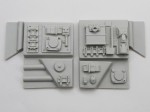It’s been a long time since I’ve been inspired to write a film review, but we have a very unique and interesting case here. It’s the eleventh film in a franchise that spans forty years, depicting several independent timelines and alternate realities, much like The Terminator, X-Men, or Back to the Future films… except here, the multiple continuities are not a result of time-travel, nor are any science-fiction elements present. This is merely four decades’ worth of writers, producers, directors and studios wantonly (and consistently) disregarding whatever came before, narrative logic be damned. This is Halloween.

Any horror movie fan knows the cycle: every ten years, Michael Myers returns to haunt movie theatres, and neither fire, nor decapitation, nor the law of diminishing returns can stop him.
The tenth-year anniversary of John Carpenter’s Halloween saw the release of Halloween 4: The Return of Michael Myers, a sequel that seemed unlikely even back in 1988; after all, Michael had clearly burned to death at the end of Halloween II (1981), and the third film was a completely unrelated story.
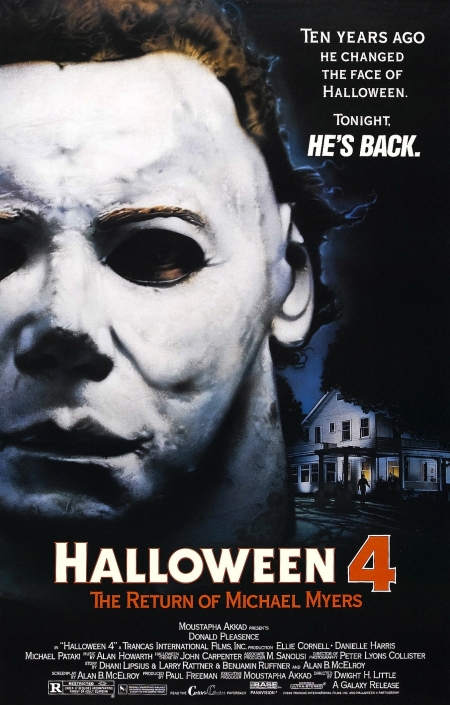
Jamie Lee Curtis (who had become a star thanks to the original film) refused to reprise her role again, so Laurie Strode was killed off in backstory, establishing her young daughter as Michael’s target for the subsequent sequels.
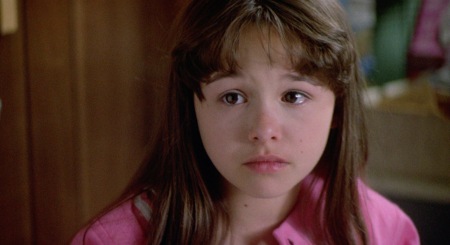
However, ten years later, Curtis was keen to return to the role — Wes Craven’s Scream had made slasher films cool again — thus she and Michael were both resurrected for the awkwardly-titled Halloween H20 in 1998.
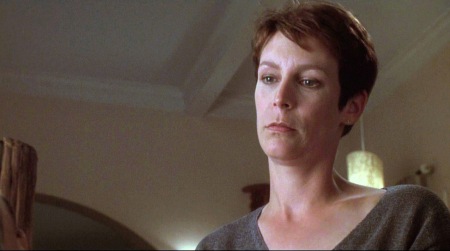
Largely ignoring the continuity — and the characters — established in the previous three movies, this seventh film (the second sequel to feature Laurie, and the fifth to feature Michael) was more revenge thriller than horror film. The final shot depicted Michael’s beheading — a most cathartic and definitive conclusion — that was immediately undone for the sequel, Halloween: Resurrection (which instead killed off Laurie in the opening act).
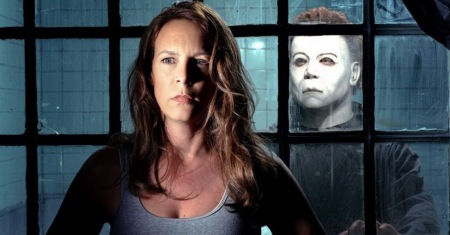
After such a long string of narrative dead-ends, the only way to justify bringing back Michael Myers for the following decade was to ignore the previous films in their entirety, and start fresh with a remake.
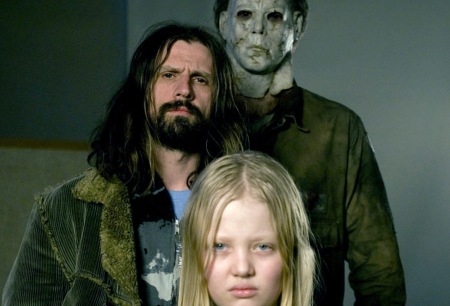
Rob Zombie’s Halloween was a very different kind of slasher film, with a greater emphasis on psychology, domestic abuse, and brutally-realistic violence. It was successful enough to justify a sequel of its own (the second film to bear the title Halloween II), but the less said about that film, the better…
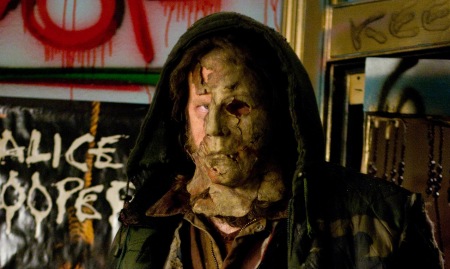
So now, in 2018, we find ourselves celebrating the fortieth anniversary with yet another film titled Halloween, and yet another attempt to ignore decades of previous continuity by resurrecting the unkillable Laurie Strode. The latest film to bear the name boldly ignores every Halloween sequel ever made, establishing a fifth unique timeline within the franchise to justify its dubious existence.
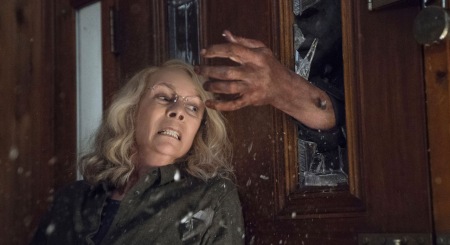
At 59, Jamie Lee Curtis doesn’t get to do much acting these days; as a result, her dedication to the role is perhaps stronger than it’s ever been, and she brings a gravitas to Laurie as great as that as the late Donald Pleasence (appropriately, since Curtis is now the same age Pleasence was in 1978).
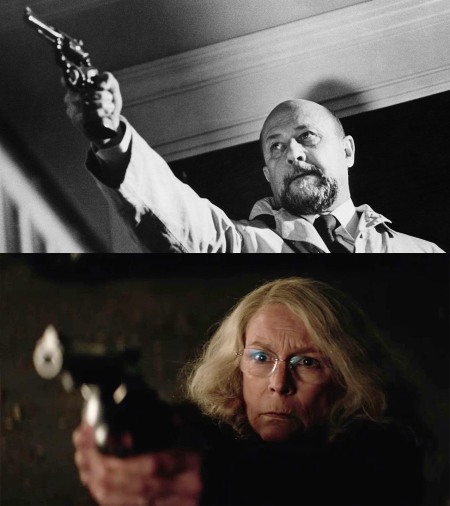
Despite having died back in 1996, however, there is a new Donald Pleasence cameo of sorts. We hear the voice of Dr. Loomis (actually supplied by actor Colin Mahan) on an audiocassette recording, and the effect is astonishingly convincing… especially considering how poorly the same effect had been attempted for the opening of H20 twenty years earlier.

Dr. Loomis was the only original character holding the franchise together during the second decade (films 4-6), and Laurie has now taken on a significant number of his character traits. She alone understands the danger Michael represents, but nobody will listen to her; she refuses to acknowledge Michael as a human being; she runs around the neighborhood waving a revolver, announcing her intention to kill, but the local cops grudgingly accept her vigilante behavior. In an awkward line of dialogue, Laurie identifies psychiatrist Dr. Sartain as “the new Loomis,” but Sartain (Haul Bilginer) serves a very different role in the film; for all intents and purposes, Laurie is the new Loomis.
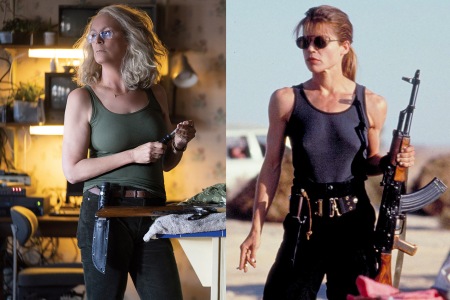
In appearance and behavior, however, Laurie bears a much greater resemblance to Sarah Connor (Linda Hamilton, right), another victim suffering from PTSD after her encounter with an indestructible killing machine. Like Sarah in Terminator 2: Judgment Day, Laurie withdraws from society, trains herself in the use of firearms, maintains a secret underground arsenal, and is obsessed with training her child in self-defense… until she’s declared an unfit parent, and loses custody of her child. The child becomes convinced her mother’s crazy, until the monster finally reappears… and naturally, mother and child reconcile over their shared hardship before the climactic confrontation. The parallels are so obvious, it’s a wonder the producers aren’t facing a lawsuit.
Next to Sarah’s knowledge of the coming apocalypse, however, Laurie seems irrationally paranoid about a killer who had murdered three teenagers and a mechanic 40 years earlier, and languished in a mental institution ever since; ignoring every event from every sequel to date makes Michael a great deal less threatening, as does the decision to cast 61 year-old James Jude Courtney as the man behind the mask.
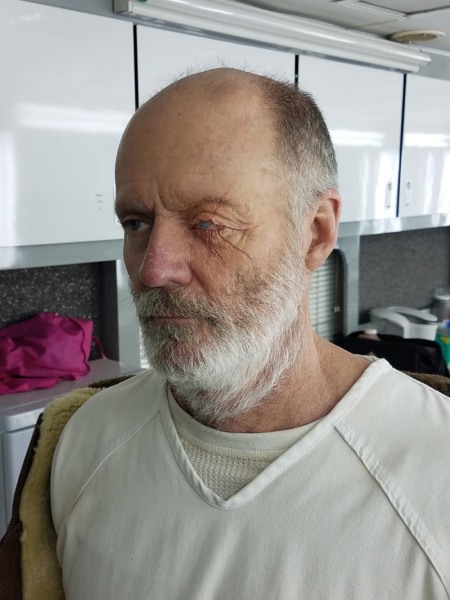
It’s not hard to sympathize with her daughter, Karen (Judy Greer), who has had to deal with Laurie’s mental illness all her life, and does her best to keep her family away from her mother’s rants. The family dynamic is believable, the drama is effective, and it’s a shame that so much of the film is wasted on Laurie’s teenage granddaughter and her friends, rather than focusing on the only unique and interesting human element in what is otherwise a run-of-the-mill slasher film.
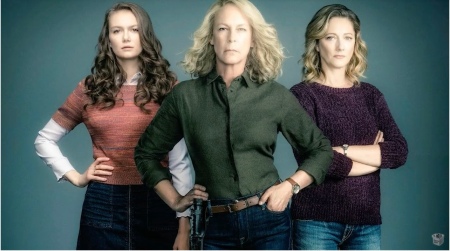
I actually had a hard time keeping track of all the disposable teenagers — none of whom have any bearing on Laurie’s story whatsoever — although they act and sound like human beings, at least. Most slasher films can’t even make that claim.
Of course, this is not most slasher films, this is Halloween, and one advantage this series has always had over its trashy imitators is real talent behind the camera. Even the worst films of the series are beautifully lit and shot, and this is far from the worst — in fact, it’s one of the best in many respects — particularly in its camerawork.
![]()
In a loving homage to the Panaglide shot that opens the original film, there’s a three-minute tracking shot that follows Michael through a suburban neighborhood, in and out of two houses and back onto the street, featuring exquisitely-timed shadows, reflections on glass, and specific details that reference the original sequel, Halloween II (where Michael gets his knife, for example). It’s undoubtedly the most impressive display of filmmaking ever seen in a slasher film.
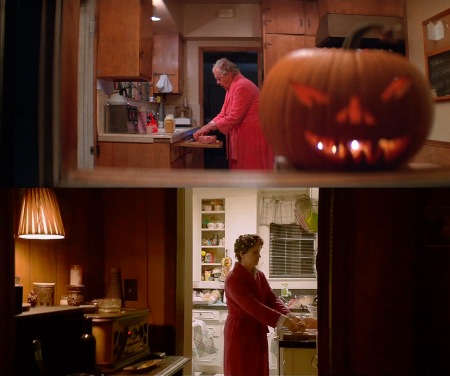
Deliberately establishing these parallels, however, draws attention to how much Michael’s behavior differs from that of the original films. In the ‘70s, Michael did a lot of stalking, and very little killing; he displayed forethought, patience, and creativity in how he displayed his victims for others to see. Over the years, these patterns of behavior have been largely forgotten — and to be fair, they make a significant return here — but there are also victims murdered immediately, and seemingly at random, which reduces him to the level of a backwoods simpleton like Jason Voorhees.
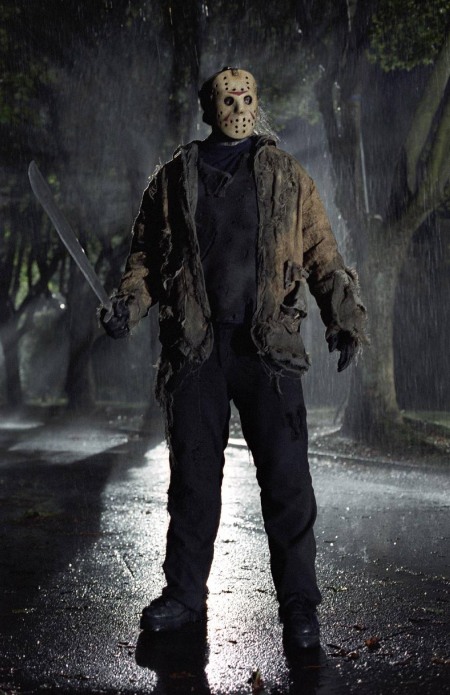
Originally, Michael simply waited for the woman in curlers to turn her back before taking her knife; here, he bludgeons her to death with a hammer first. The change is impossible to ignore.
There are other sequel problems that plague this one as well, particularly its inconsistent tone. Moments of levity are common in modern horror films, especially when it comes to self-aware sequels, but such humor has never worked in the Halloween series. At best, jokes come off as weird and inappropriate; at worst, they completely ruin the mood of a scene. Minor characters such as police officers are often used for comic relief, and the ineffective cops in this movie are no exception.
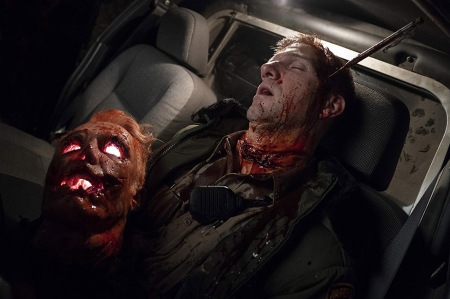
Worse still, the narrative makes it clear that Michael’s complex displays simply couldn’t be achieved as depicted in the film. This macabre presentation, for example, features a dead cop in the driver’s seat of a police cruiser, placed there after Michael must’ve driven the car through the gate and into Laurie’s front yard, parking the vehicle in front of her house in plain view of her security cameras. Her son-in-law Ray (Toby Huss) hears the car approach, sees it on the monitor, looks at it through the window, then walks out the front door to approach it directly. At what point would Michael have been able to exit the vehicle, put the body of the dead cop in his place, lay the illuminated head of the other cop in his lap, close the door, and then circle around so that he could surprise Ray from behind?

What follows is even more improbable. After Laurie has blown off half of Michael’s hand, she goes hunting through her house with her shotgun, moving quietly from room to room, listening intently for him. During this time, Michael opens the front door, goes outside to retrieve Ray’s body, drags the corpse up to the front porch, brings it inside the house, and closes the door behind him. He carries the body up the central staircase and into a bedroom, opens a closet door, lifts the body up onto a shelf, and then closes both the closet door and the door to the bedroom. He manages all this without even being heard — much less seen — by Laurie.
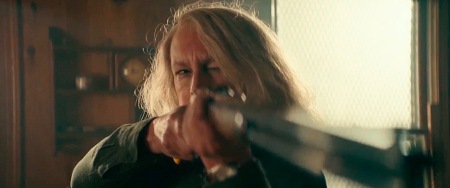
If his footsteps hadn’t sounded so loud in the previous scene (as he walked across the hardwood floors in his heavy work boots) this might not have seemed quite so absurd…
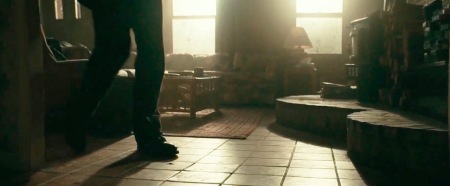
So it’s a well-shot but ridiculous slasher film, with many of the same problems as all the other sequels. Why, then, are so many reviewers and fans praising this particular Halloween as the best since the original? And how did it manage to make over $250 million worldwide, far more money that any previous film in the franchise?
Much of the film’s success is thanks to the reverence director David Gordon Green (with writers Danny McBride and Jeff Fradley) have for Carpenter’s original, and how closely they follow his blueprint for their sequel. Great care has been taken to establish a visual continuity between films, particularly with regards to framing and shot scale:
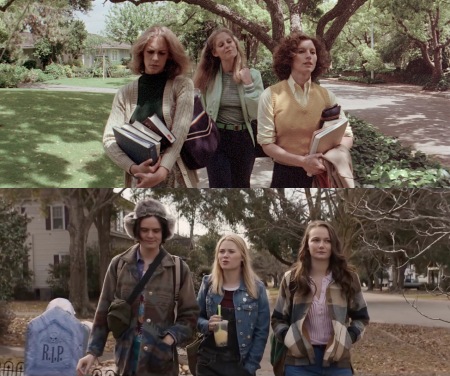
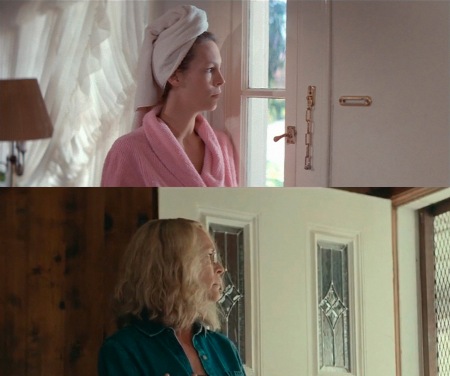
Familiar props and motifs make a prominent return:
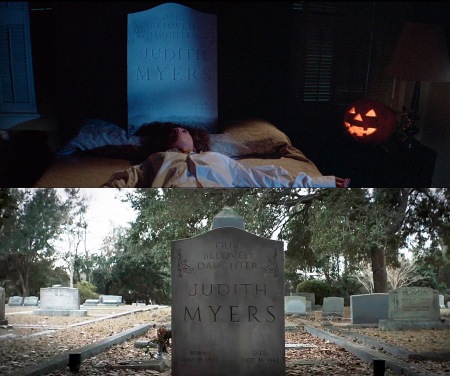
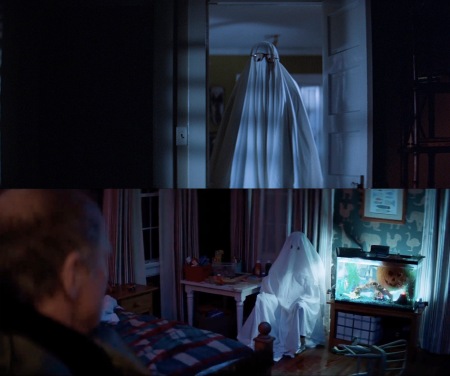

Even specific locations are recreated.
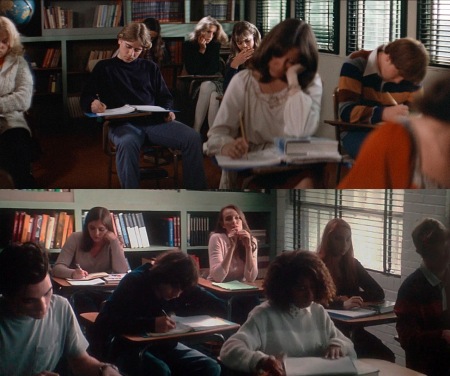
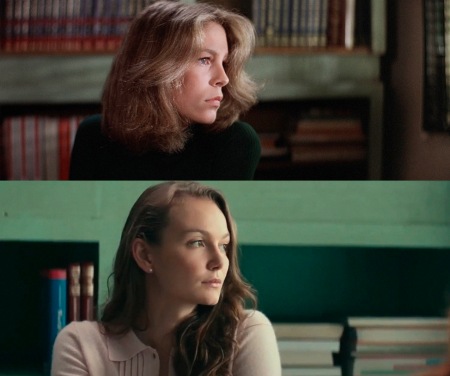
Most importantly, Michael looks a lot more like he used to, thanks to angles and lighting that cast him in shadow and generally conceal the actor’s eyes.
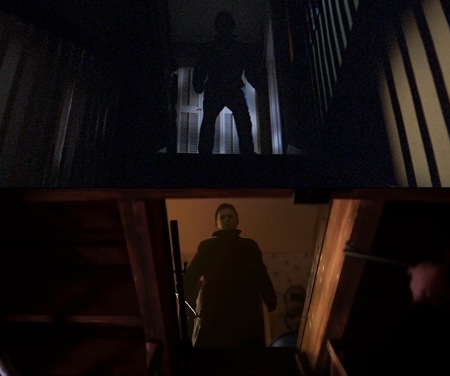
Dean Cundey, who shot the original back in ’78, always ensured that the mask was lit to obscure Michael’s eyes:
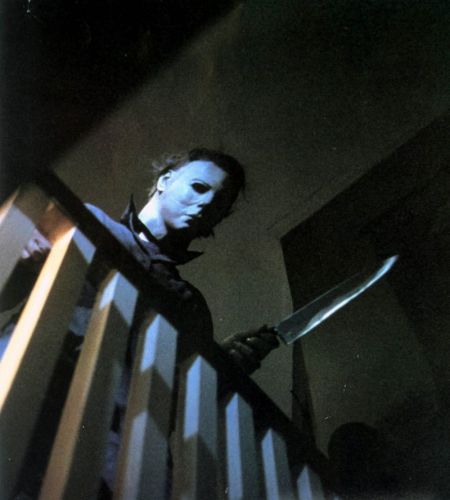
Later sequels disregarded this rule entirely, with disappointing results.
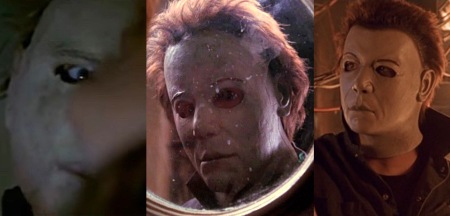
For a collector of movie memorabilia like myself, Michael’s mask is the key to a successful Halloween sequel — if the mask isn’t scary, the movie isn’t — and for once, they got it right. This is not supposed to be a similar-looking mask that Michael finds by chance (like in The Return of Michael Myers), nor is it just inexplicably there from the get-go (like in H20). It doesn’t change significantly from shot-to-shot, either (like it does in the aforementioned sequels). No, this mask remains consistent in appearance because the filmmakers had a clear idea of how they wanted it to look — it’s supposed to be the forty-year old original, as contrived as that sounds — and shows all the damage to prove its age. Note the hole visible in the neck, made when Laurie stabbed him with a knitting needle back in ’78:
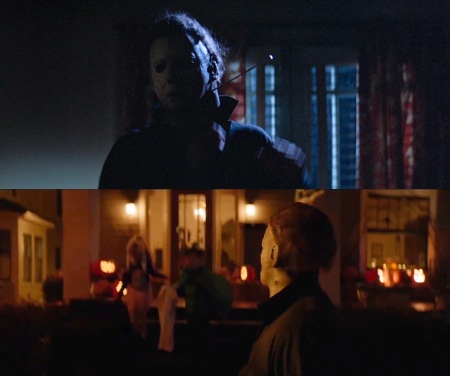
Appropriately, the distressed mask makes Michael look like a scary old man.
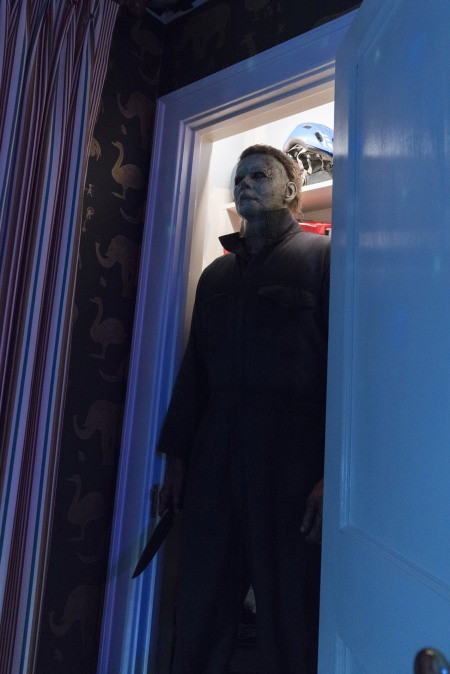
Best of all, John Carpenter himself has composed a whole new score for the film. The original film remains terrifying today primarily thanks to his music, and while each subsequent sequel retains the iconic title theme, they have otherwise gone in wildly different directions musically. This is the first Halloween since the original to expand on the scope of the original score while retaining the unique 5/4 time signature, and maintaining the minimalist approach to orchestration without simply repeating the same melodies. It’s a triumphant return to form for Carpenter (along with son Cody and Daniel Davies), and while the final film butchers some of the sound cues — most notably the opening title track — the complete score can be appreciated on the soundtrack album.

It’s not a great film by any stretch of the imagination, but compared to its predecessors — slasher films in general, and Halloween sequels in particular — it’s well above expectations. Of the Halloweens, it boasts the best camerawork, the best music, the best portrayal of Laurie Strode, and the best representation of Michael Myers since 1978, both in appearance and behavior. That’s more than enough to declare it a cut above the rest.
🎃🎃🎃
Incidentally, this is how I rate the rest of the series:
- Halloween (‘78) 🎃🎃🎃🎃
- Halloween II (‘81) 🎃🎃
- The Return of Michael Myers (‘88) 🎃🎃
- The Revenge of Michael Myers (‘89) 🎃
- The Curse of Michael Myers (‘95) 🎃
- H20: Twenty Years Later (‘98) 🎃🎃
- Resurrection (‘02) 🎃
- Halloween (‘07) 🎃🎃🎃
- Halloween II (‘09) 🎃



 Posted by tekering
Posted by tekering 
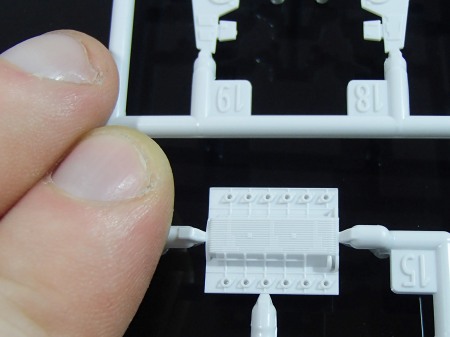
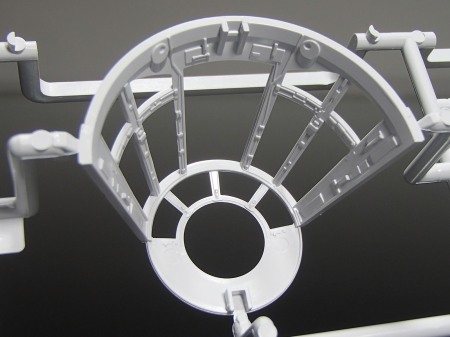
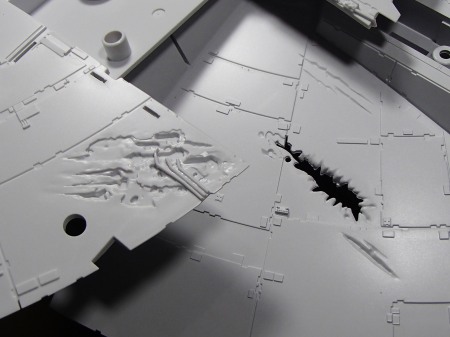
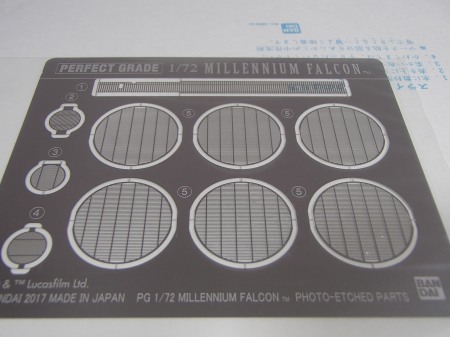
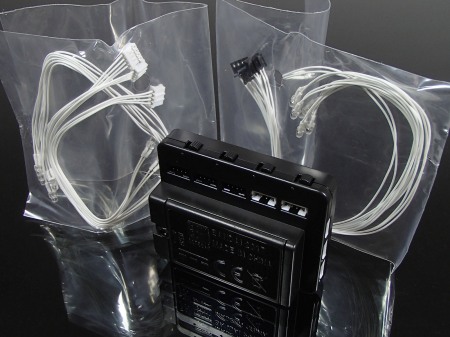
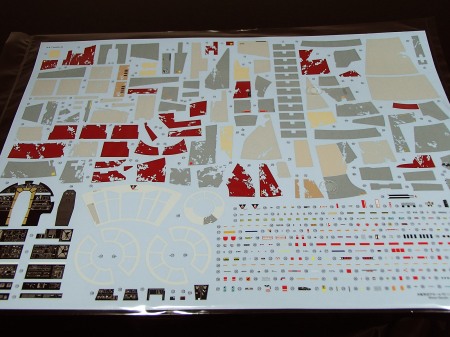
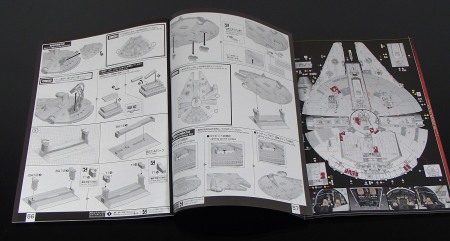
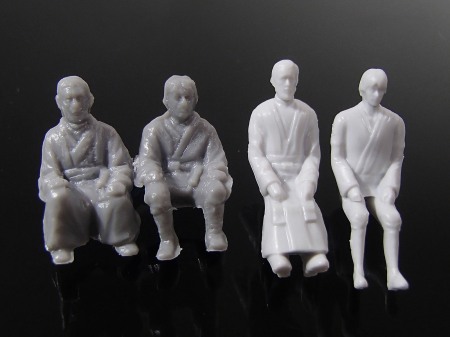
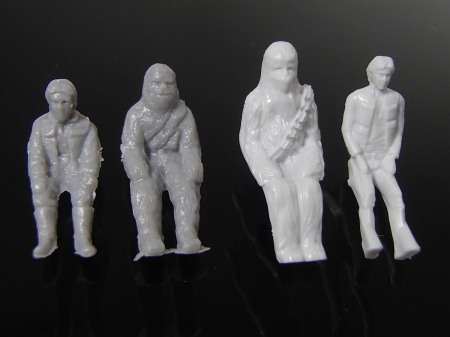
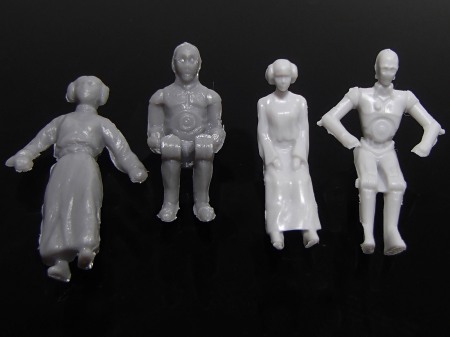
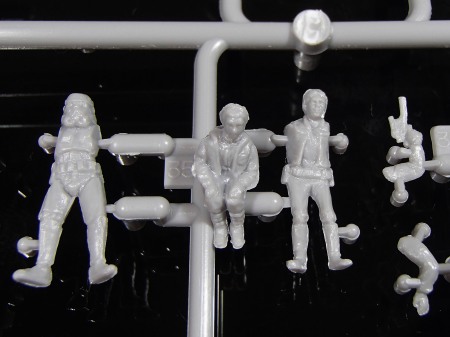
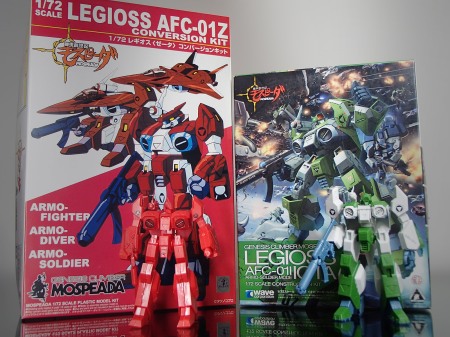
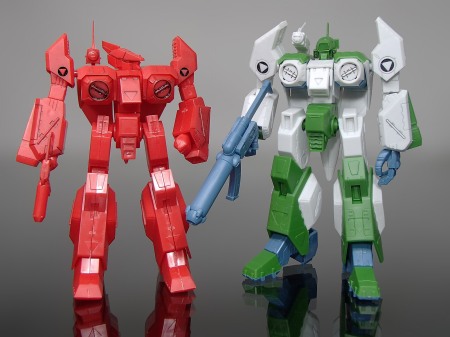
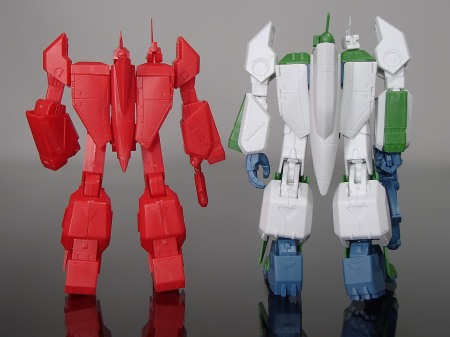
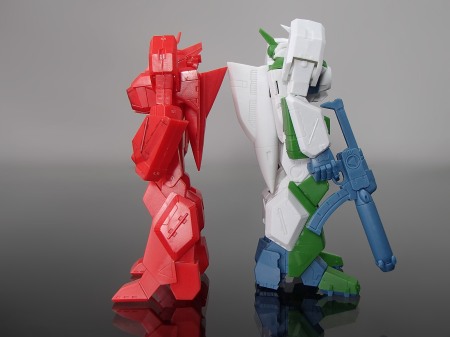
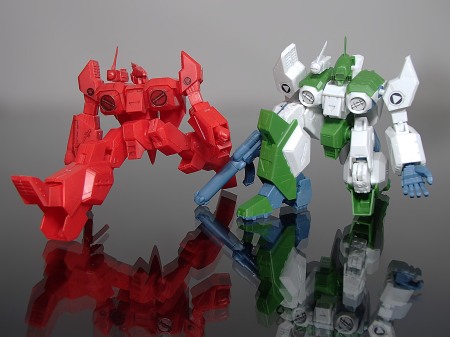
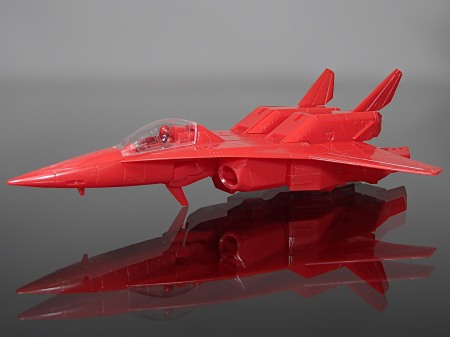
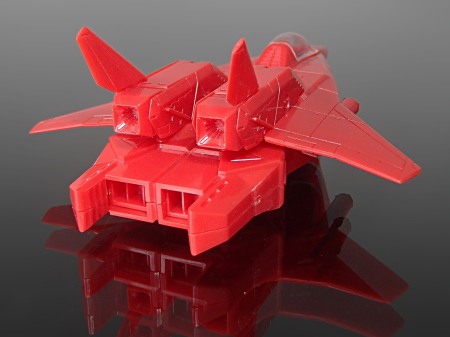
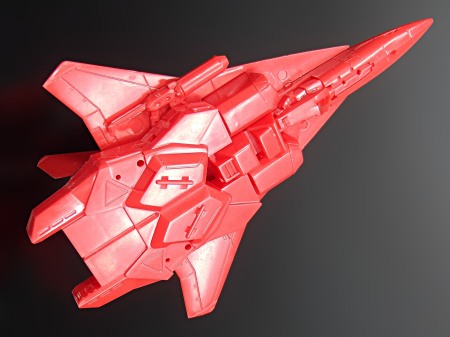
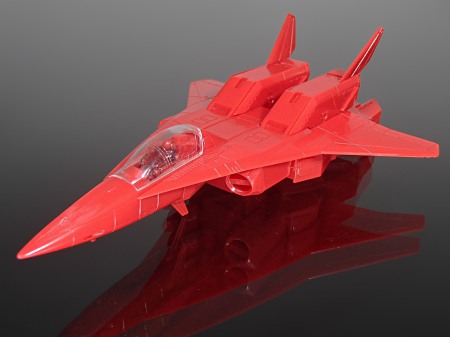









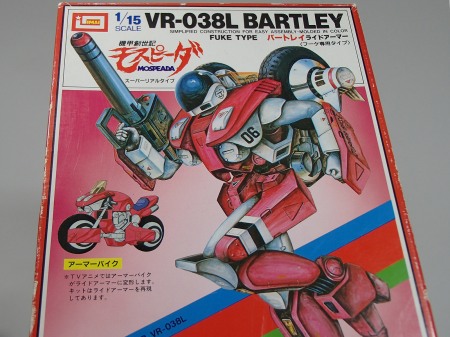
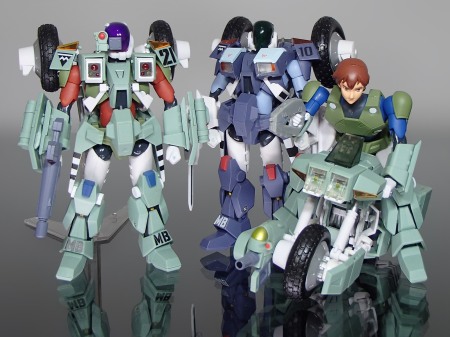
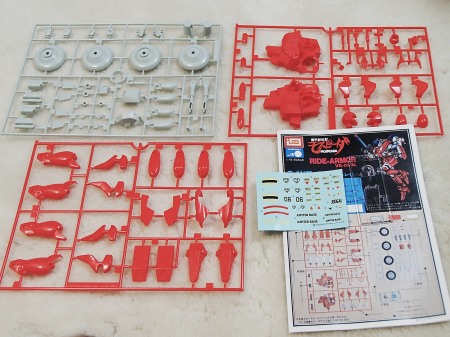
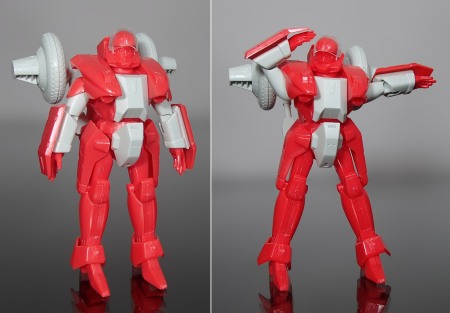
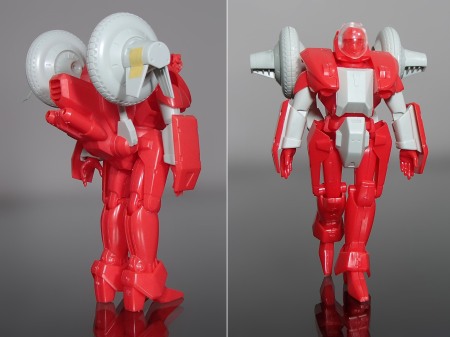
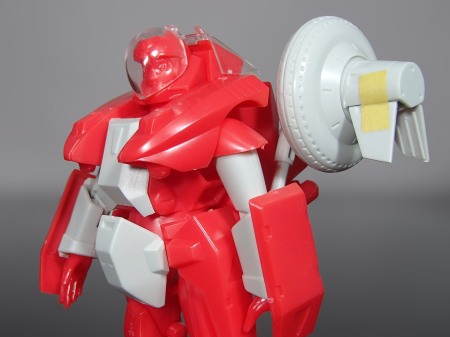
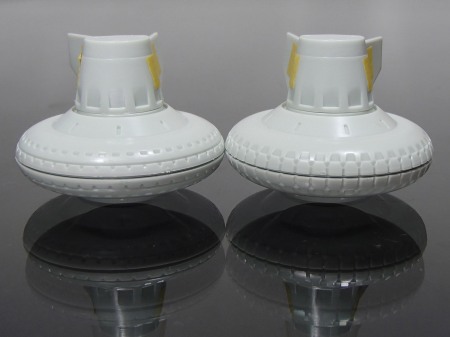
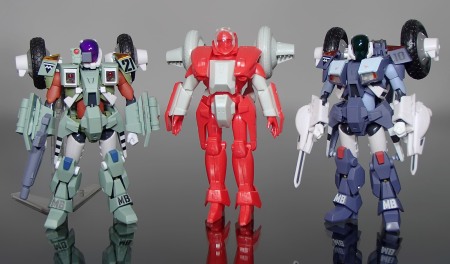
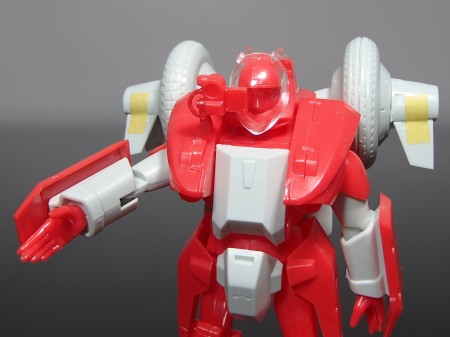 There’s no weapon included in the kit!
There’s no weapon included in the kit! 















